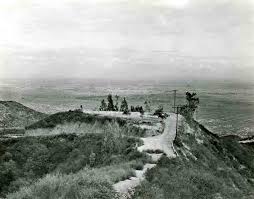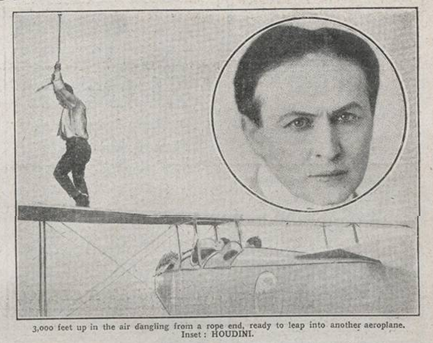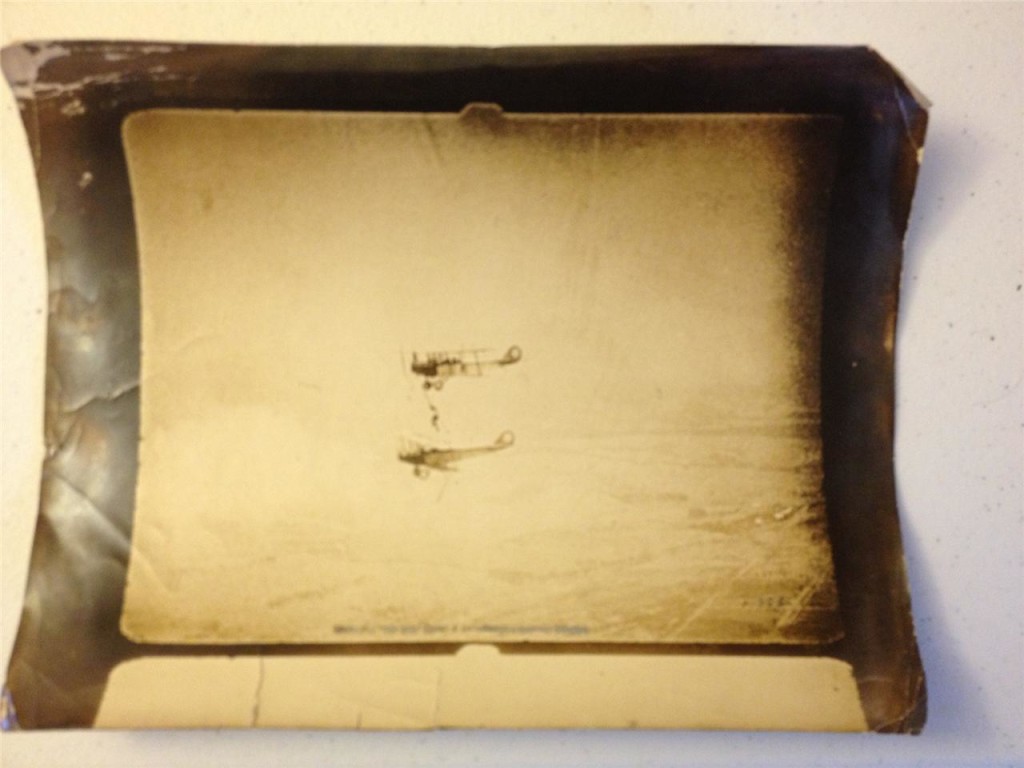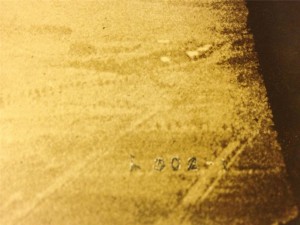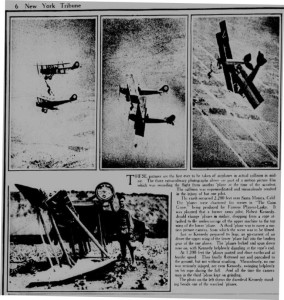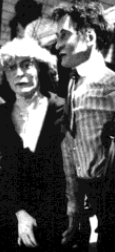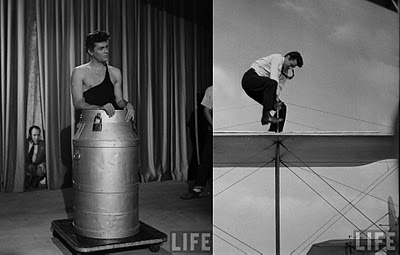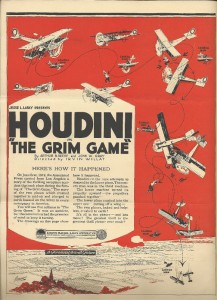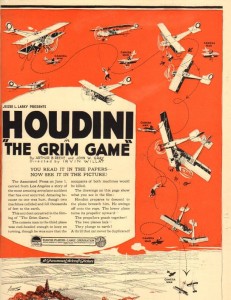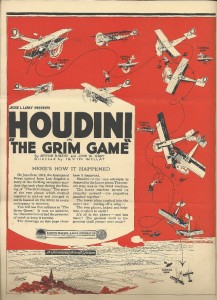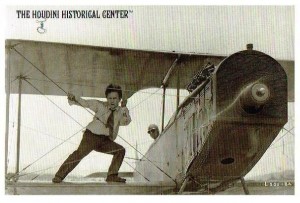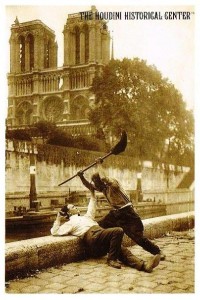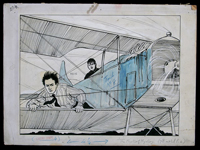How does Houdini know Ormer Locklear and what was his connection to The Grim Game?
Houdini went to the Trav Daniel Sporting Goods Store during his week [January 1916] in Fort Worth. He asked for a pair of Spaulding track shorts that he wanted to use as underwear. James Locklear was in the store and recognized Houdini. He told Houdini that he had enjoyed his act at the Majestic and had also seen Houdini free himself from the straight jacket at the Star-Telegram Building. During the conversation, Locklear mentioned to Houdini that his brother Ormer did tricks while riding a motorcycle. After meeting Ormer, Houdini suggested that Ormer drag Houdini handcuffed behind his motorcycle. Houdini also stated that Ormer would receive publicity from the stunt as well as Houdini and that perhaps Ormer would become a daredevil one day; The event took place on Main Street, because it was the first paved street in Fort Worth. Houdini wore thick overalls and a hood for the stunt. His hands were tied behind his back and a rope was attached to Houdini from the motorcycle. With a crowd looking on, Houdini was pulled slowly behind the motorcycle. Before Ormer could get any speed, the event was over. Houdini freed himself. {Paraphrased from Locklear Walks on Wings by Art Ronnie}
Ormer did become a daredevil and was the first to walk the wings of planes in flight. He became well known during the 1920’s and became a star in Hollywood. Houdini used the idea of a transfer from one plane to another in his film, The Grim Game. It was at this time, that a tragic accident involving Houdini’s double occurred, and Houdini took the credit for the filmed transfer. Houdini later claimed that it was he that was the first to be photographed in a plane transfer, but he always gave credit to Locklear as the first to actually make the transfer.
[Houdini’s Texas Tours 1916 & 1923 by Ron Cartlidge]
Addendum: Houdini played a character with the last name of Locke in “The Master Mystery” and Ormer Locklear played a character with the last name of Locke in “The Skywayman”. “The Skywayman” and “The Grim Game” both used Jenny airplanes with rope ladders on the bottom wing to perform their stunts.



